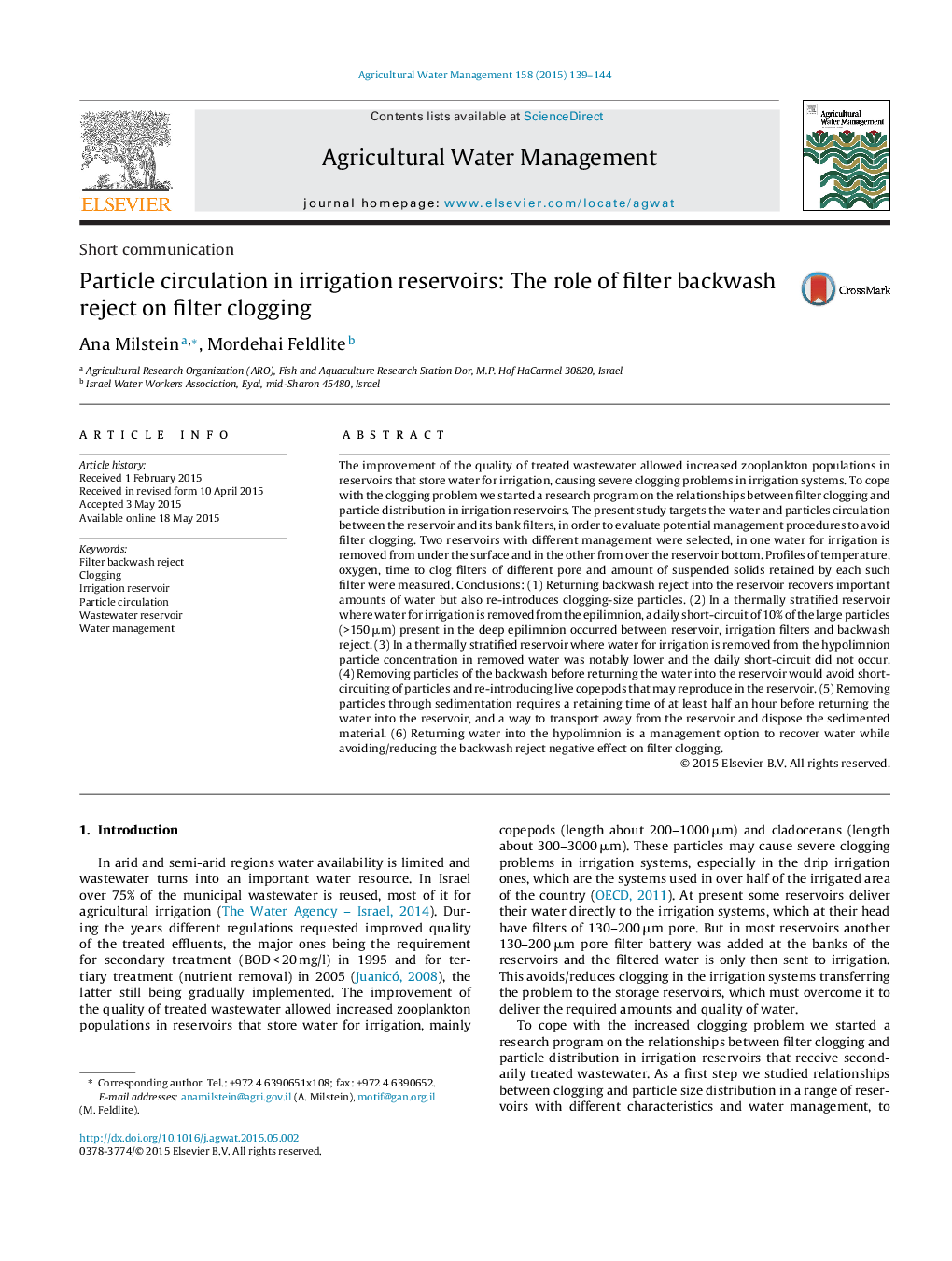| کد مقاله | کد نشریه | سال انتشار | مقاله انگلیسی | نسخه تمام متن |
|---|---|---|---|---|
| 4478429 | 1622921 | 2015 | 6 صفحه PDF | دانلود رایگان |
• We studied water and particles circulation between reservoir and its bank filters.
• Returning backwash reject into the reservoir re-introduces clogging-size particles.
• 10% of the deep epilimnion particles >150 μm are removed and re-introduced daily.
• Backwash reject contains live copepods that may reproduce in the reservoir.
• With a retention time of 30′ most particles of the backwash reject would sediment.
The improvement of the quality of treated wastewater allowed increased zooplankton populations in reservoirs that store water for irrigation, causing severe clogging problems in irrigation systems. To cope with the clogging problem we started a research program on the relationships between filter clogging and particle distribution in irrigation reservoirs. The present study targets the water and particles circulation between the reservoir and its bank filters, in order to evaluate potential management procedures to avoid filter clogging. Two reservoirs with different management were selected, in one water for irrigation is removed from under the surface and in the other from over the reservoir bottom. Profiles of temperature, oxygen, time to clog filters of different pore and amount of suspended solids retained by each such filter were measured. Conclusions: (1) Returning backwash reject into the reservoir recovers important amounts of water but also re-introduces clogging-size particles. (2) In a thermally stratified reservoir where water for irrigation is removed from the epilimnion, a daily short-circuit of 10% of the large particles (>150 μm) present in the deep epilimnion occurred between reservoir, irrigation filters and backwash reject. (3) In a thermally stratified reservoir where water for irrigation is removed from the hypolimnion particle concentration in removed water was notably lower and the daily short-circuit did not occur. (4) Removing particles of the backwash before returning the water into the reservoir would avoid short-circuiting of particles and re-introducing live copepods that may reproduce in the reservoir. (5) Removing particles through sedimentation requires a retaining time of at least half an hour before returning the water into the reservoir, and a way to transport away from the reservoir and dispose the sedimented material. (6) Returning water into the hypolimnion is a management option to recover water while avoiding/reducing the backwash reject negative effect on filter clogging.
Journal: Agricultural Water Management - Volume 158, August 2015, Pages 139–144
